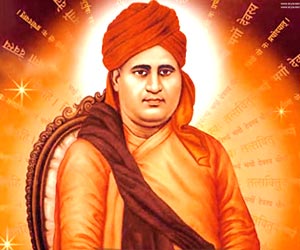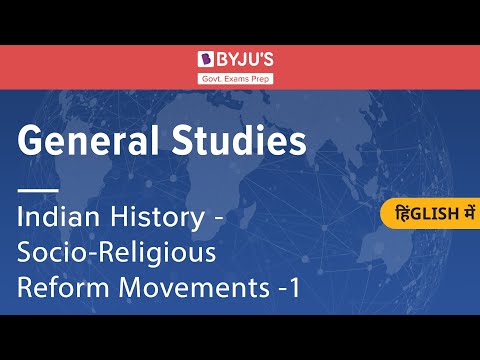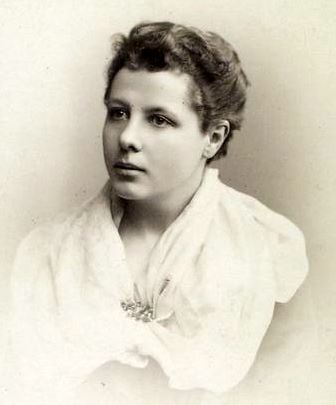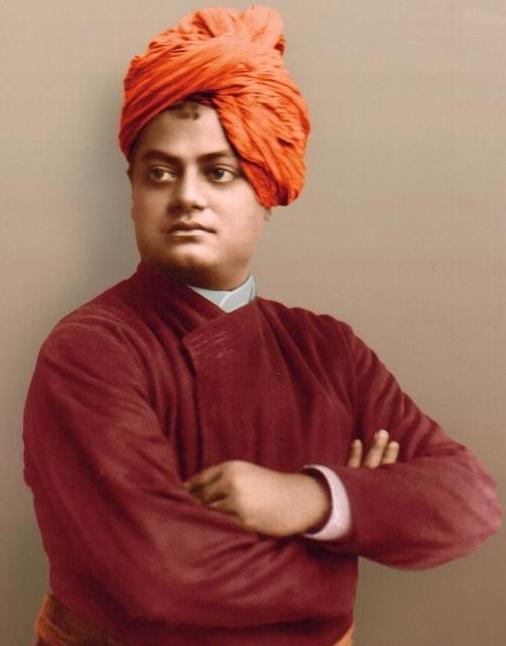India in the 19th century witnessed a series of reform movements undertaken in various parts of the country. These movements were oriented toward a restructuring of the Indian society along modern lines.
Explore the Ultimate Guide to IAS Exam Preparation
Download The E-Book Now!
19th Century Social and Religious Reform Movements are important from the perspective of the upcoming UPSC exam. Candidates looking forward to appearing for the exam must refer to the details discussed below.
The candidates can go through the relevant topics useful for their upcoming exams from the links provided below:
| Bipin Chandra Pal | Raja Ram Mohan Roy |
| Ishwar Chandra Vidyasagar | Swami Vivekananda |
Background
- The Indian society in the first half of the 19th century was caste-ridden, decadent and rigid.
- The conquest of India by the British during the eighteenth and nineteenth centuries, exposed some serious weaknesses and drawbacks of Indian social institutions.
- When the British came to India, they introduced the English language as well as certain modern ideas. These ideas were those of liberty, social and economic equality, fraternity, democracy and justice which had a tremendous impact on Indian society.
- As a consequence, several individuals and movements sought to bring about changes in social and religious practices with a view to reforming and revitalizing society.
- These efforts, collectively known as the Renaissance, were complex social phenomena. It is important to note that this phenomenon occurred when India was under the colonial domination of the British.
- There were some enlightened Indians like Raja Ram Mohan Roy, Ishwar Chand Vidyasagar, Dayanand Saraswati and many others who were willing to fight and bring reforms to society so that it could face the challenges of the West.
Types of Reform Movements
Basically, there were two kinds of reform movements in the 19th century in India. Given below are the details about the same, important from the civil services exam preparation:
- Reformist
These movements responded with the time and scientific temper of the modern era.
- Revivalist
These movements started reviving ancient Indian traditions and thoughts and believed that western thinking ruined Indian culture and ethos.
Reformist Movements
Some of the reformist movements of the 18th and 19th centuries are discussed below:
Brahmo Samaj

Founded in 1828 in Calcutta by pioneer social reformer Raja Ram Mohan Roy (1772 – 1833), the movement fought against idol worship, polytheism, caste oppression, unnecessary rituals and other social evils like Sati, polygamy, purdah system, child marriage, etc. Society also strove for women’s rights like widow remarriage and education of women. It also fought, attacked prevailing superstitions among Hindus.
Aligarh Movement

Sayyid Ahmed Khan founded Mohammedan Anglo-Oriental College in Aligarh in 1875. Later, it became Aligarh Muslim University. It offered modern education to Muslims.
Prarthana Samaj
- In 1863, Keshub Chandra Sen helped found the Prarthana Samaj in Bombay.
- The Prarthana Samaj preached monotheism and denounced priestly domination and caste distinctions.
- Its activities also spread to South India, through the efforts of the Telugu reformer, Veeresalingam.
- Chandavarkar, basically a philosopher, was a great leader of the Prarthana Samaj.
Revivalist Movements
Some of the revivalist movements are discussed below:
Arya Samaj

- The social and religious reform in North India was spearheaded by Swami Dayanand Saraswati (1824-1883) who founded the Arya Samaj in 1875.
- This society strove against idolatry, polytheism, rituals, priesthood, animal sacrifice, child marriage and the caste system. It also encourages the dissemination of western scientific knowledge.
- They worked for the improvement in the condition of women, advocated social equality and denounced untouchability and caste rigidities.
Read more about Swami Dayananda Saraswati, from the linked article.
Deoband Movement
It was a revivalist movement. In 1866, Muhammad Qasim Wanotavi and Rashid Ahamad Gangohi founded a school in Deoband (Uttar Pradesh, Saharanpur District). Deoband movement focused on uplifting the Muslim community through religious education.
The video given below is in line with the CSE syllabus for the 19th Century Social and Religious Reform Movements. This has been curated by experts for guiding IAS aspirants:

Other Important Movements
The Theosophical Movement

Though Annie Besant’s name is most associated with this society, it was actually founded by Madame Blavatsky and Colonel Olcott in New York (later shifted to Madras) in 1875. It promoted the study of ancient Hindu, Buddhist and Zoroastrian philosophies. It promoted the concept of universal brotherhood, as expounded in the Upanishads and Vedas. It laid stress on occultism.
Ramakrishna Mission

This mission was founded by Swami Vivekananda in 1897 in Belur near Calcutta to promote the teachings of Vivekananda’s Guru Ramakrishna Paramahansa. It opposed the caste system and untouchability. It focused on the universality of all religions and propagated Vedanta.
Satyashodhak Samaj

This society was founded by Jyotirao Govindrao Phule on 24 September 1873 in present-day Maharashtra. It campaigned against idolatry and the caste system. It advocated rational thinking and rejected the priesthood. Jyotirao Phule is said to have used the term ‘Dalit’ for the oppressed castes.
Young Bengal Movement
This movement was started by Henry Louis Vivian Derozio in Calcutta in the 1820s. Derozio was an Anglo-Indian college teacher in Calcutta, and he encouraged radical thinking among his students. He criticised the prevailing religious practices of orthodox Hinduism. He also inspired free-thinking and propagated the spirit of liberty, equality and freedom.
Widow Remarriage Association
Pandit Vishnu Shastri founded Widow Marriage Association in 1860.

Frequently Asked Questions Related to Social and Religious Reforms Movement
What are social-religious reform movements?
What were the major issues of the socio-religious reform movements of the 19th century?
Who is called the father of Modern India?
What was the purpose of Satyashodhak Samaj?
Why did Swami Dayananda Saraswati establish the Arya Samaj?
What is the main aim of the social reform movement?
Related Links
| UPSC 2024 Calendar | UPSC Books |
| UPSC 2024 | UPSC Notes |
| Revision Made Easy: Socio-Religious Reform Movements UPSC | IAS History Questions |
I want to join by jus
Hi
Get all the details for IAS Preparation with BYJU’s at the linked article.
Very good notes